Step by Step tying of a Snake-like Needle Tube Fly
by John Gray
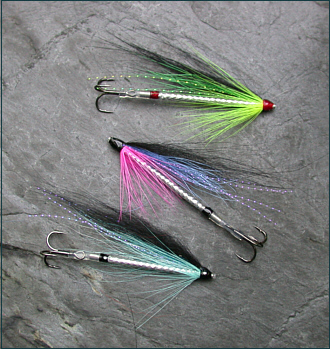
Below is a step-by-step tying sequence of a
snake-like tube fly, intended for sea trout night fishing,
but also as a daytime lure for salmon and sea trout. Dressed
on an ultra slim stainless steel
needle tube, diameter
1.5mm, the Snake tube fly is more easily constructed, and
will fish a little deeper, than the conventional snake fly.
It is also likely to be more durable, especially if the
mylar tubing is omitted, taking full advantage of the slim,
shiny stainless steel tube.
The appeal of the conventional snake fly, with its body of
braided nylon, monofilament or wire, lies primarily in its
slimness and its flexibility. The design allows the creation
of slim, light lures of several inches in length, which have
proved extremely effective at times in night fishing for sea
trout. There is no denying that expertly tied snake flies
are very attractive. It seems to me that they are not unlike
Falkus's sunk lure, but with the front hook cut off. They
also present endless possibilities for those who derive
satisfaction from creative fly tying. However, the
conventional snake fly requires considerable time and care
in its construction and is not the most durable of lures. I
am reluctant to spend so much time on a lure which may be
lost in a riverside bush or be discarded on account of a
broken hook on its first outing. Nor can I see how a braided
snake fly, certainly in the shorter lengths of two inches or
so, offers any significant advantage over a slim tube fly
(the needle tubes shown here, for example, have an outside
diameter of only 1.5 mm).
The distinguishing characteristic of the snake fly is the
flexibility of the body. I cannot see what advantage this
offers over a tube fly. The tube flies illustrated here, or
any tube fly which makes use of a short length of silicone
tubing as a hook link, have equal flexibility where it
matters, i.e. where the hook is connected to the tube. This
is the point at which any leverage may be exerted on the
hook hold. The silicone hook link on the needle tube fly is
extremely soft and supple, resulting in the very minimum of
leverage.
Indeed, it might be said that the flexibility of the snake
fly's nylon body can be disadvantageous, in that the body,
if it does not lie straight, may twist on the leader while
fishing and/or casting. It might be argued, of course, that
the twisting action of a slim, lightweight, snake fly fished
near the surface might prove an irresistible attraction to a
sea trout, and this may well be true. I once caught a nice
brown trout on a four or five inch length of sandeel tail
fished in such a twisting, spinning motion over the surface of the sea
pool of a west highland burn. Despite the potential attractions of the
snake fly, though, I prefer my flies not to twist and turn
on the leader and, when fishing a long lure late at night, I
generally try to fish it well below the surface. So, my
preference is for a slim tube fly, usually an ultra-slim
stainless steel needle tube, which is more durable and
more easily dressed. The kind of tube fly shown here offers, I
think, a simple and practical alternative to the rather less
simple conventional snake fly.
The Snake Tube Fly
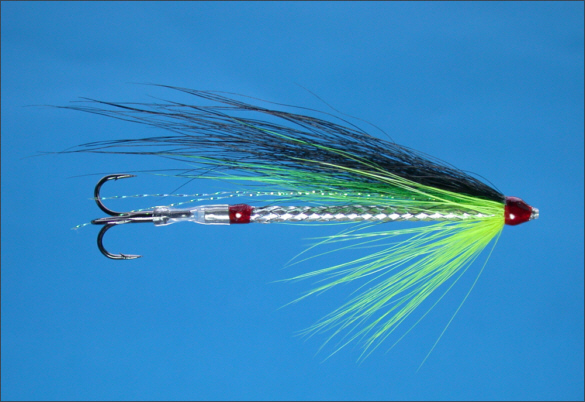
Dressing
tube: 40mm long stainless steel needle
tube, diameter 1.5mm
body: silver braided mylar tubing
wing: green under black Arctic fox hair, with a few
strands of Krystal Flash
hackles: fluorescent yellow
Step 1 - Place needle tube in
tube
fly vice
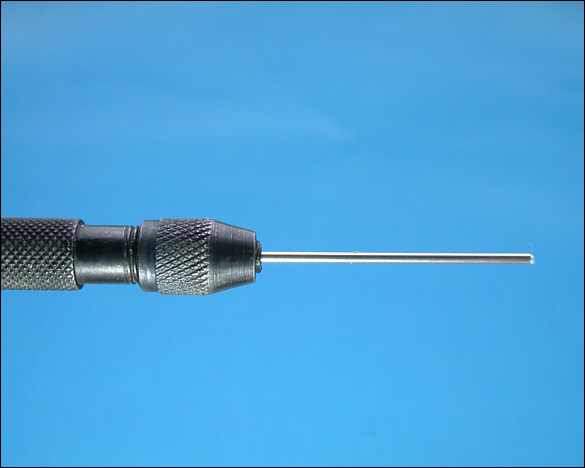
Step 2 - Wind a short bed of tying thread at the rear,
leaving 5mm clear for the silicone hook link.
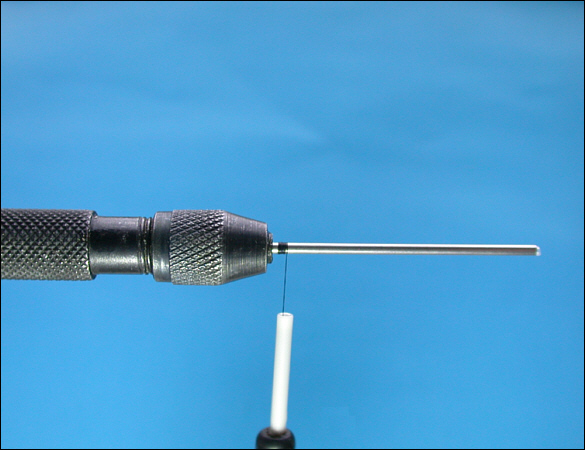
Step 3 - Slip a length of braided mylar tubing on to the
needle tube, secure and apply two or three coats of varnish
to the tying thread.
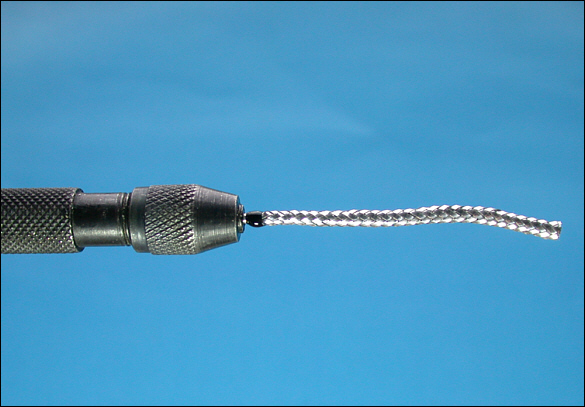
Step 4 - Apply tension to the mylar tubing so that it lies
tight to the needle tube and secure at the head of the
needle tube.
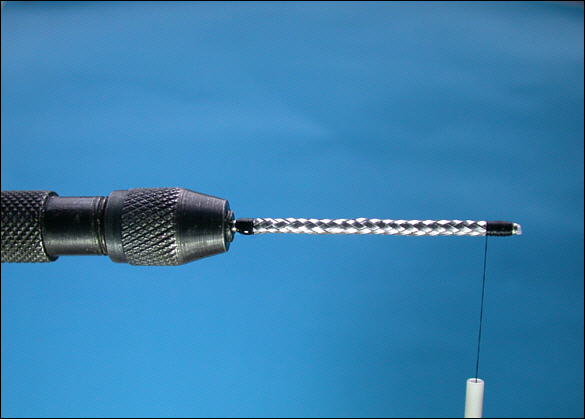
Step 5 - Tie in a fluorescent yellow hackle.
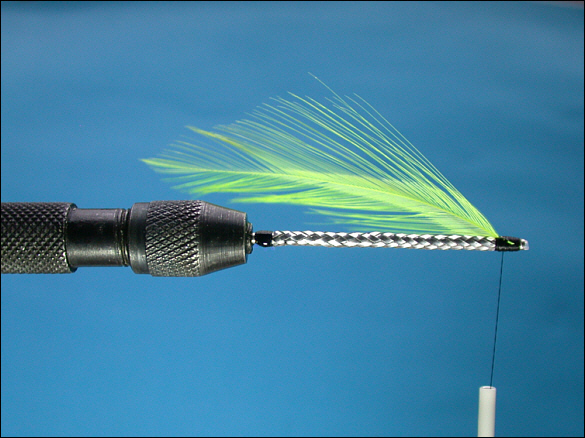
Step 6 - Wind three turns of hackle and secure.
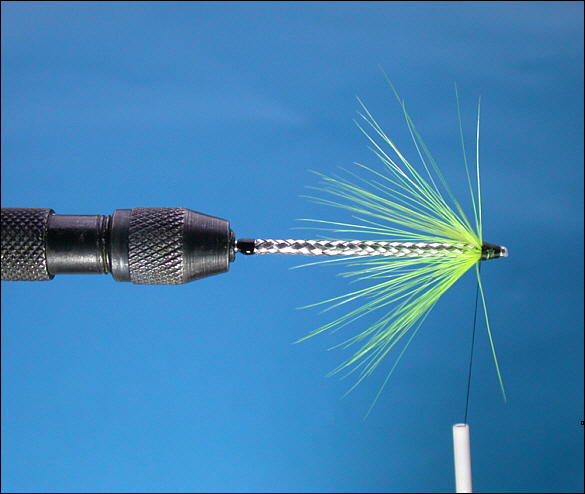
Step 7 - Tie in an underwing of green Arctic fox.
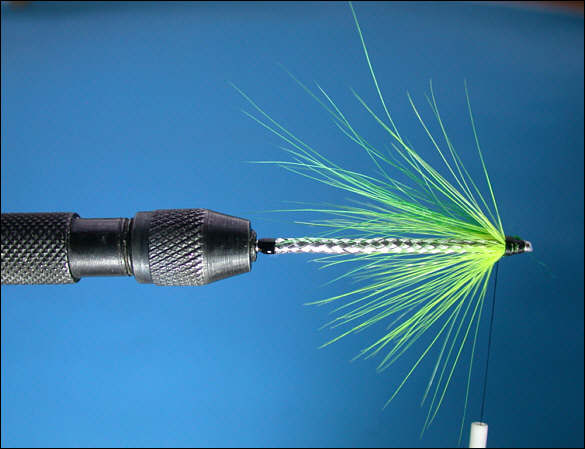
Step 8 - Tie in a few strands of olive Krystal Flash.
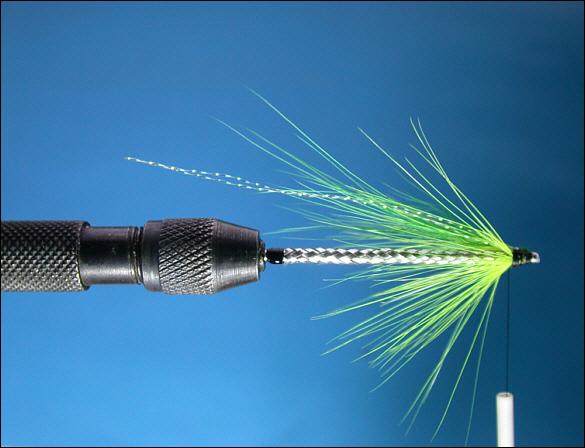
Step 9 - Tie in a wing of black Arctic fox hair.
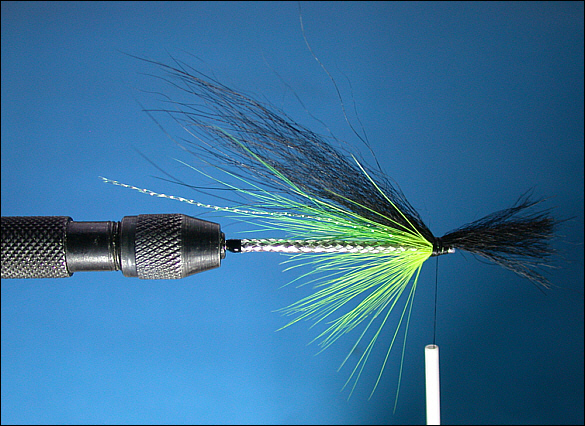
Step 10 - Trim surplus hair, form a neat head and varnish.
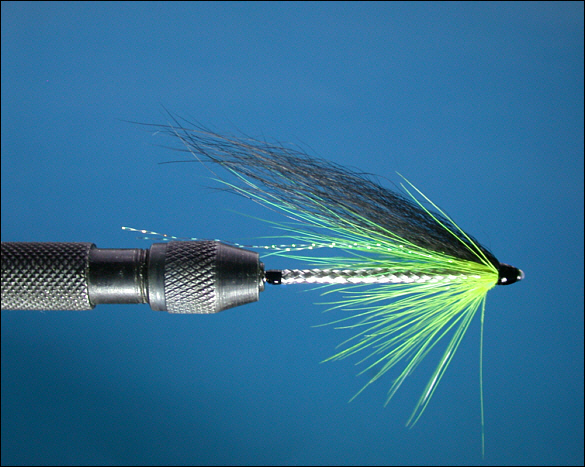 |
A Snake Tube Fly with silicone sleeve
and treble hook
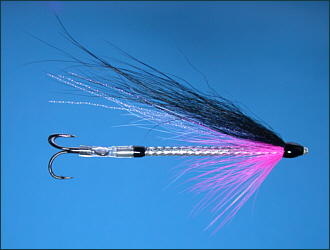
A Black and Blue Snake Tube Fly
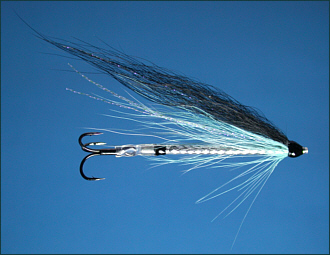
Simple Snake
A simplified variant of the above tube fly
can be made by omitting the mylar body tubing, with greater
durability and little,
if any, loss of efficacy, as in the example below
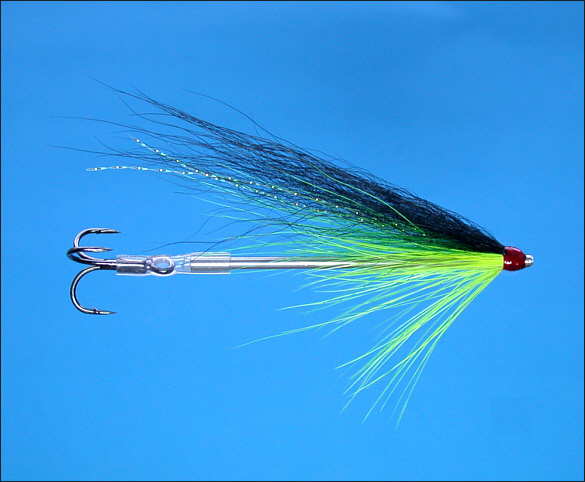
For more information on Salmon, Trout and Sea
Trout Flies, see
Trout and Salmon Flies |
Grays Tube Fly Adaptor

The new Tube fly adaptor from Grays of
Kilsyth complete with 25 assorted needle tubes
BUY NOW
|